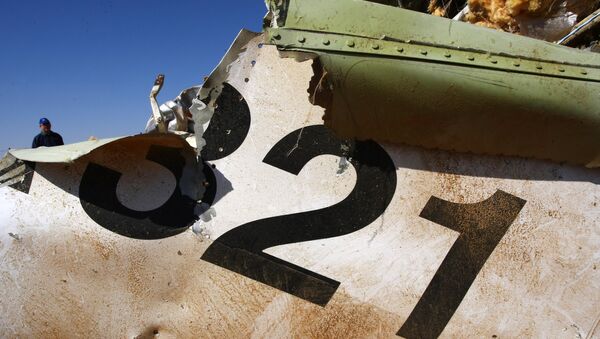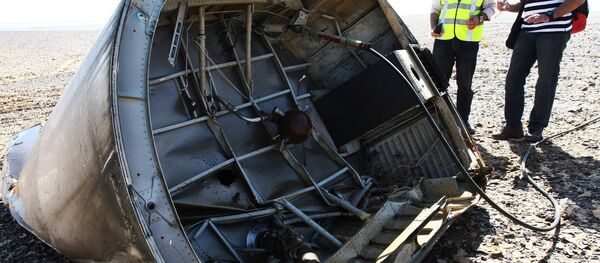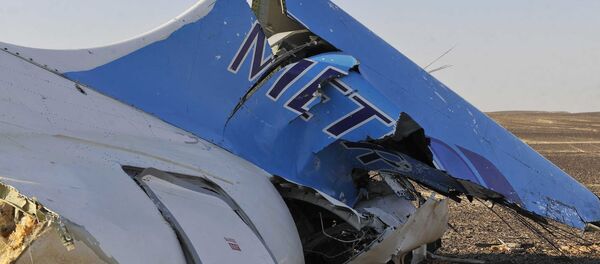WASHINGTON (Sputnik) — The growing balance of evidence suggests that the Russian Metrojet airliner that crashed in the Sinai desert was destroyed by a Lockerbie-style bomb planted onboard the aircraft in breach of security at the Sharm el-Sheikh airport, experts told Sputnik.
"Most likely something loaded into the aircraft did this," Ted Postol, an MIT physicist and missile expert, told Sputnik on Tuesday. "The Lockerbie and UTA precedents are relevant."
On December 21, 1988, 259 people were killed on board Pan Am Flight 103 when a bomb inside the airplane exploded while the aircraft flew over Lockerbie, Scotland after reaching its cruising altitude of 31,000 feet (9,400 meters).
Former US Ambassador to Saudi Arabia Chas Freeman, an expert on Middle East terrorism, agreed with Postol that the parallels with the Lockerbie and UTA bombings strongly pointed to a bomb in the Metroject disaster.
"It seems significant that there was no mention of the detection of a missile being fired. That seems to strengthen the conjecture that something placed aboard the aircraft exploded. That was what brought down both UTA 772 and Pan Am 103," Freeman told Sputnik.
The evidence of the heat flash detected by a US surveillance satellite also strengthened the case that a bomb smuggled onboard the airliner was responsible, Freeman noted.
"This shows that a satellite detected a mid-air explosion. That means this was almost certainly not an equipment failure," he added.
Retired Air Force Lieutenant Colonel Carl Baker agreed with the assessments.
"It is correct to assume that if a thermal sensor picked up the explosion of the aircraft, then it would have picked up the heat from the missile as well," he pointed out.
Baker also noted the statement by Director of National Intelligence James Clapper that the US government has no evidence to suggest a missile shot was involved.
Postol said the wide area across which the remains of the airliner were scattered confirmed the high altitude it had reached, making a missile strike more unlikely.
"The fact that there was a debris field of roughly 8 km in length certainly indicates that the plane disintegrated at high-altitude. If the plane was at 31,000 feet as reported, it is very unlikely it would have been hit by a surface-to-air missile. … It looks like the best bet is a bomb," Baker concluded.
Surface-to-air missiles are more than capable of striking planes at that altitude, but it would require a type of large surface-to-air missile, Postol added.
"A Stinger could not come close to such an altitude. It also would not have a warhead nearly large enough to cause the breakup of a plane," he said.
A Stinger-type missile, Postol explained, could destroy an engine which could result in the plane crashing, but would not cause the plane to disintegrate at high-altitude.





